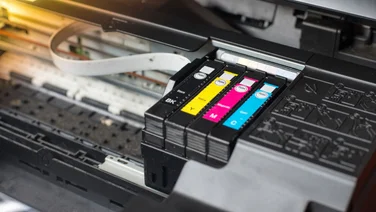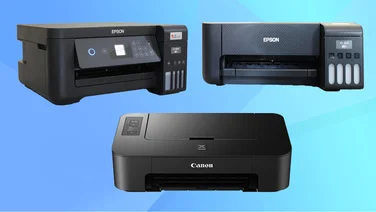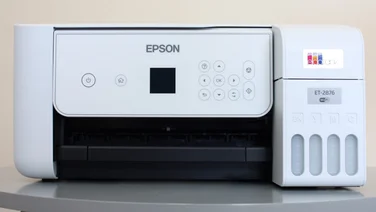To help us provide you with free impartial advice, we may earn a commission if you buy through links on our site. Learn more

The glossy white curves of HP’s DeskJet 3630 are a stylish change from the rows of black printers that usually surround me, even if from certain angles it reminds me of bathroom furniture. It’s not a bad trick for such a cheap device: it’s hard to spend less on an MFP, yet the DeskJet 3630 neither looks nor feels cut-price.
There’s no duplex (double-sided) printing, but the simple blue paper trays look good and keep everything tidy enough. There’s no fancy screen, but if all you’ll do is make the odd photocopy, the basic controls and simple LCD are just fine.

As you’d expect, you can connect this MFP to your wireless network, which lets you share it among several people, or access it from mobile devices. With only basic controls available, this is done via a temporary USB connection when you’re installing HP’s software onto a PC. Unfortunately, that’s where my criticisms begin.

The default installation choices result in Google Chrome being installed and set as your default browser – something I’d only expect to see supporting a free app. And while HP is by no means alone among printer manufacturers in wanting to collect anonymised information about how you use its products, its installer makes it harder than most to opt out. If you install the Android app, you’ll need to opt out again there.
I’ve long criticised elements of HP’s PC software for inkjet MFPs, from an over-simplified print driver that hides basic choices away in an unfriendly advanced options menu, to the even more simplistic scan software which survived a recent redesign to remain almost wilfully irritating. Unfortunately, nothing has changed here. By default, the printer is set to its slower ‘quiet mode’: you must un-set this from the HP Toolbox app, as counter-intuitively there’s no option in the driver.

Given its low price, it’s much easier to forgive this MFP’s other weaknesses. Despite a decent 11.2 pages-per-minute (ppm) result when printing text, it could deliver only two pages of colour graphics per minute. Photos were very slow, too, with each 6×4″ print taking more than four minutes. It’s not a quick copier, either, needing a minute to duplicate a colour A4 page, or 40 seconds in black only. HP’s TWAIN interface wouldn’t let me complete our 150dpi test, but at 300dpi, scanning an A4 page took 25 seconds. A 1,200dpi photo scan took three minutes, which is very slow.

Fortunately, there’s no need to make excuses for the quality of its results. On plain paper, black text was bold and crisp, and colour graphics were reasonably vivid, and unusually free of inkjet artefacts such as grain or streaking. Scans were fine for most purposes, with details preserved from even the lightest and darkest regions, but again I was frustrated that photos appeared to have been sharpened, and the TWAIN interface has no option to turn this off.
I often find that the cheapest devices are saddled with the highest running costs, but fortunately that’s not the case here. Buy cartridges yourself and an A4 page of mixed text and graphics will cost about 9.3p, but you can lower this – and save hassle – by subscribing to HP’s Instant Ink service. This is a good budget MFP that won’t make you feel like you’ve scrimped and saved: it’s a shame that HP hasn’t paired it with better software.






